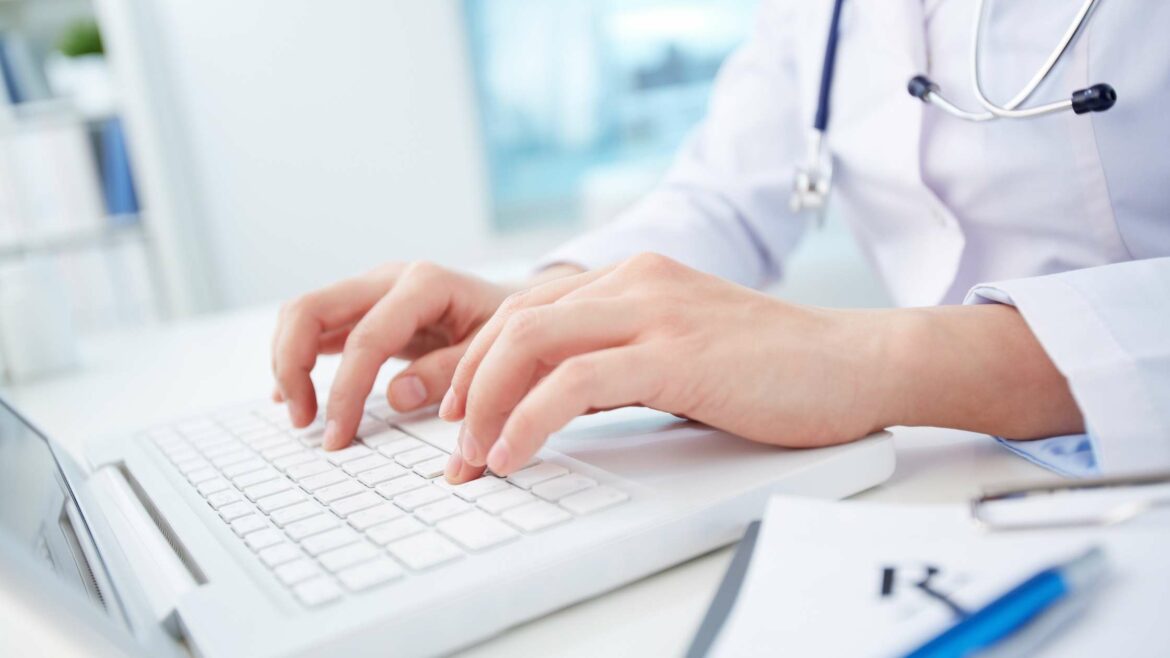Want to learn how to measure employee productivity in healthcare?
Knowing how productive your employees are is essential in just about any industry, including healthcare. This way, you can better determine if you’re meeting patient and company goals and if there’s room for improvement.
But what are the productivity metrics you should track when it comes to the healthcare sector?
In this article, we’ll highlight the healthcare performance metrics you should track and even show you some tools that you can use to monitor employee productivity in the healthcare industry easily.
This article contains:
(Click on the links below to go to a specific section)
How is Labor Productivity Traditionally Measured in the Healthcare Industry?
4 Metrics You Should Track to Measure Employee Productivity in Healthcare
4 Tips on How to Boost Employee Productivity in Healthcare
- Minimize Inefficiencies That Occur in the Process
- Keep Track of Employee Turnover Rate
- Use Technology to Optimize What Your Staff Spends Their Time on
- Use Productivity Tracking Tools to Boost Administrative Productivity
Let’s get started.
How is labor productivity traditionally measured in the healthcare industry?
When it comes to measuring the productivity of health care providers, most people look at the number of patients treated per day and focus on the time taken to complete each case.
However, this method is flawed as it focuses on patient volume and patient reimbursements — instead of focusing on the patients themselves and their satisfaction with the service.
That’s why, before learning how to measure employee productivity in healthcare the right way, let’s first clearly understand where the traditional approach fails.
What are the key metrics of the traditional productivity approach?
In the healthcare sector, the traditional measures of productivity are the labor output per health worker and the cost of the goods/services.
Here, the two key metrics are time and financials, which directly focus on the bottom line of your operations, rather than the quality of services you provide.
When it comes to the time productivity metric, people consider:
- The time needed to take care of a patient.
- The number of patients a care provider sees over a given period.
- The total time a health care employee spends with each patient.
The financial productivity measurement includes things like:
- Labor costs per employee.
- Total hours of overtime pay.
- Health care costs related to hospital equipment, drugs, utilities, and other expenses.
That’s why, according to traditional productivity monitoring, having lower costs and faster hospital services indicates higher labor productivity.
However, that isn’t always the case.
Sure, serving patients quicker and optimizing your hospital expenses can positively affect workforce productivity in the health system.
But this isn’t the best way to track productivity.
Here’s why.
Why is the traditional method ineffective?
Providing patients with quicker service can sometimes be a good performance measurement. However, if that comes at the cost of decreased patient satisfaction, then the metric isn’t useful.
Remember, there’s a lot more to healthcare productivity than “hard” metrics like time taken and cost per patient.
Focusing on other aspects, like satisfaction and service quality, can give you a lot more information about the effectiveness of your healthcare organization as a whole. And this, in turn, can affect the amount of revenue you bring in.
Need proof?
About 60% of patients in the United States check the health provider’s ratings and reviews before making a choice.
So if you’re solely looking at how fast you can get a patient through the pipeline, you’ll miss vital information about the quality of care you provide.
Instead, use different approaches to measure the productivity of your human resources for more precise information on the quality of your health care services.
That’s why it’s always important to incorporate “soft” metrics such as patient waiting time, the value of the service provided, and patient satisfaction when evaluating your productivity.
4 metrics you should track to measure employee productivity in healthcare
While there are tons of metrics you can track in the healthcare industry, most of them can be misleading.

For example, as you’ve seen, simply measuring the number of patients you tend to is inefficient as it doesn’t take the quality of care into account.
If you want to measure your health workforce productivity accurately, you need to use the right metrics or KPI (Key Performance Indicators).
Some metrics you should use when measuring health system productivity include:
A. Patient visit length
Keep track of each patient’s visit, how long it lasts, and collect information on the patient’s satisfaction with the amount of time the service takes.
If going through patient cases quickly reduces customer satisfaction, pay more attention to each case and try not to rush through the stages of a patient’s visit.
On the other hand, if patients get frustrated with the length of the process, your customer retention will decline. In this case, you need to figure out how to speed things and increase your team productivity in the work process.
B. Patient wait time
This KPI affects your patients directly.
The wait time is the amount of time the patient waits to receive a health service after checking in.
The longer they have to wait, the more frustrated they get. In fact, about 80% of patients say that reducing wait time will remove partially or entirely their frustration.
Make sure the process of moving a patient from checking in to seeing a health worker is as efficient as possible. This will reduce the waiting time significantly and improve the patient experience at your healthcare organization.
C. Patient satisfaction rate
Providing quality care is essential, and it heavily relies on patient feedback.
But how do you know how satisfied your patients are?
About 52% of healthcare providers ask for some sort of feedback. You can do it through written questionnaires, personal interviews, and online email forms.
And what should these feedback forms target?
You want to target specific areas like quality of inpatient care, outpatient care, wellness programs, etc.
This way, you can receive valuable information on your current performance rates and get insights into how you can improve customer satisfaction and employee productivity.
D. Patient retention rates
Happier patients are more likely to come back to you when they need healthcare assistance. This indicates a higher customer satisfaction rate.
This is another metric that’ll confirm whether your employees are doing things right, and providing excellent patient health care. If you have high patient retention rates, your employees have adequate productivity levels.
On the other hand, if you see very low or decreasing patient retention rates, check the feedback for the care services you provided over a given time period.
That can help you understand what went wrong and why patients are unhappy.
This could include long wait time periods, lack of adequate assistance, or other issues caused by low employee productivity.
To have a fully engaged workforce and happier patients, make sure that such obstacles are minimized or completely eliminated.
4 tips on how to boost employee productivity in healthcare
Now that you know how to measure employee productivity in healthcare properly, let’s get into how you can boost it easily:

1. Minimize inefficiencies that occur in the process
Specific healthcare processes might turn out to be longer and more cumbersome than they should be.
Usually, this is due to government regulations that could slow down the operations in your organization, which in turn, affect productivity. In this case, try to understand whether you can streamline these processes with a local regulator’s help.
Another aspect you want to plan with care is staffing.
Gather information on how many patients visit in one day and find out when the peak hours are. This way, you know when to schedule more employees and when you need less.
Having more staff during the busy hours of the day will significantly reduce wait times and improve overall productivity.
2. Keep track of employee turnover rate
Do you have a high turnover rate?
More importantly, is there an increasing number of disengaged employees?
Then, there might be inefficiencies in your work process.
If your employees are unhappy or have to work long hours because you’re understaffed, sooner or later, they’ll leave.
Pay attention to metrics such as:
- Employee health and wellness.
- Absenteeism rates.
- Health risks related to the work they perform daily.
- Overall satisfaction with their work.
- Mental health.
Tracking such aspects of an employee’s well-being can give you better insights into what’s going wrong and how you can eliminate such inefficiencies.
Ask each employee for the problems they experience, where they get bottlenecked, and what will help them be more efficient and provide better care to the patients.
This way, you have better chances to improve productivity and employee satisfaction. This, in turn, will give you a more engaged employee who can provide higher quality services to patients.
3. Use technology to optimize what your staff spends their time on
When your healthcare providers work with a patient, you want maximum employee engagement. And as an employer in the healthcare industry, you want your employees to fully concentrate on providing high-quality medical care services.
You don’t want them to waste time or get distracted by small tasks like filling out the patient’s record and writing medical notes.
That’s where EMRs (Electronic Medical Records) prove to be useful. As it manages all patient files accurately, you can easily find the documents you need anytime you want.
In turn, your employees will be more productive — they’ll have to spend less time recording information and experience fewer administrative issues.
You can also incorporate online forms and patient portals on your website for faster information processing. This way, your operations will be smoother, reducing patient frustration and waiting time.
4. Use productivity tracking tools to boost administrative productivity
Administrative tasks are one of the most overlooked tasks when it comes to healthcare systems.
Whether it’s documenting patient records, calculating bills, or taking notes from healthcare professionals, there’s a lot of admin activities that you’re engaged in as a healthcare organization.
And since there are so many of these administrative tasks, it’s easy for them to add up.
And if your staff is inefficient in dealing with this, such as being distracted or spending time on the wrong sites and apps, you could be wasting tons of time — on a daily basis!
Luckily, all you need is a productivity management system to deal with this.
It’ll help you easily analyze how well your admin staff is performing and optimize any time-consuming healthcare work processes.
And the best solution for this?
Time Doctor!
What’s Time Doctor?

Time Doctor is a powerful productivity tracking software used by big companies as well as small businesses to monitor remote work and in-office productivity.
Time Doctor is incredibly easy to use and can help you track exactly how much time an individual employee spends on each task.
With Time Doctor, you can:
- Create and assign projects with ease for better administrative workforce management.
- Rate websites and apps as productive or unproductive and see whether your administrative healthcare staff spends their time on work-related platforms or social media.
- Access detailed and easy-to-understand reports on employee productivity.
- Use its integrated payroll system to pay your health care staff with ease.
- Track and record billable hours to bill customers accurately.
- Track and measure productivity across other apps like Zendesk and ClickUp.
Time Doctor also safeguards employee privacy as it monitors their web and app activities only during work hours.
Final thoughts
Workplace productivity tracking in healthcare can seem overwhelming.
After all, there are lots of metrics you need to pay attention to see the larger picture.
But with the right practices and tools on hand, it becomes much simpler.
Just use the metrics and tips we covered here to see what works for you and get started immediately.
For example, using a productivity tracking software can give you all the information you need to achieve higher productivity and better cost-effectiveness in your admin tasks.
Similarly, with the right procedures, you can optimize your processes across all areas of your healthcare services. This, in turn, will lead to more productive employees and happier patients!

Liam Martin is a co-founder of Time Doctor which is software to improve productivity and help keep track and know what your team is working on, even when working from home.


